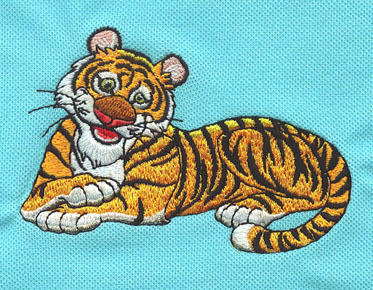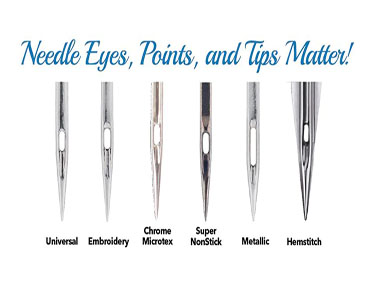Choosing The Best Embroidery Accessories for Your Design Work
Three of the most important embroidery
accessories are cloth, thread, and needle. You should select a fabric according
to the embroidery style and the intended use of the finished product. The
weight and thickness of the thread should be consistent with the fabric, and
the best universal option is the stranded cotton. The needle should not be
thicker than the thread to avoid ugly holes. Small, sharp scissors, hoops, and
tracing material can be useful embroidery accessories, but are not required.
The following content also has some reference value for Eagle digitizing.
Just about any kind of fabric can be embroidered, but some of them work better than others, depending on the style of embroidery. Counted stitch patterns are best done on fabrics with an equal number of rows of threads. Materials such as linen, evenly woven linen and canvas are used for cross stitch or counted thread embroidery such as hardanger. Even weave fabrics are named by the number of threads per square inch (2.5 cm); a higher thread count means finer material and fewer stitches.
For hand-painted embroidery, cotton, linen, and silk are the most popular choices. Cotton is a durable fabric that is easy to find in a variety of colors and patterns. Linen and silk are usually a little thinner than cotton and usually drape better. All three fabrics come in a variety of weights, from lightweight muslin and chiffon to heavier twill and brocade. You should choose the weight of the fabric based on the functionality of the finished product. Pillowcases for everyday use should be of heavier, sturdier fabrics such as poplin, while decorative pillowcases can be made from fine grass
The weight of the fabric helps determine the type of thread needed. Stranded cotton is the most widely used thread because you can easily change the thickness by reducing or increasing the number of strands. Stranded cotton is available in a variety of colors at craft stores. Silk thread is very strong and does not fray as easily as cotton, but many silk threads will not retain their dyed color if washed. Available in a variety of widths, ribbons are another possibility and are best used to create effects like loops and flower petals.
Needles, the final essential embroidery accessory, come in a variety of types and sizes: like evenly woven fabric, the higher the number, the finer the needle. Sharps are good general purpose needles and usually come in various packages. Crewel and Milliner needles work best with stranded thread. Tapestry and chenille are finer needles, tapestry has a blunt point and chenille has a sharp point. To choose the best size, compare the needle shank to the thickness of the thread you are using; if they are the same size, the thread will fill the hole left by the needle. Gold-plated needles leave the least mark and are the best choice for those allergic to the usual nickel plating on needles
There are also a few other embroidery
accessories that are not required but may be helpful. No special scissors are
required for embroidery, but a small, sharp pair of scissors is useful for
cutting thread without fraying. Embroidery hoops keep your material flat and
taut, but not everyone likes using them. If you want to try a hoop, make sure
it's large enough to hold your entire design so you don't have to keep moving
your fabric. Additional materials such as tracing paper and fabric markers are
helpful in planning the design.



